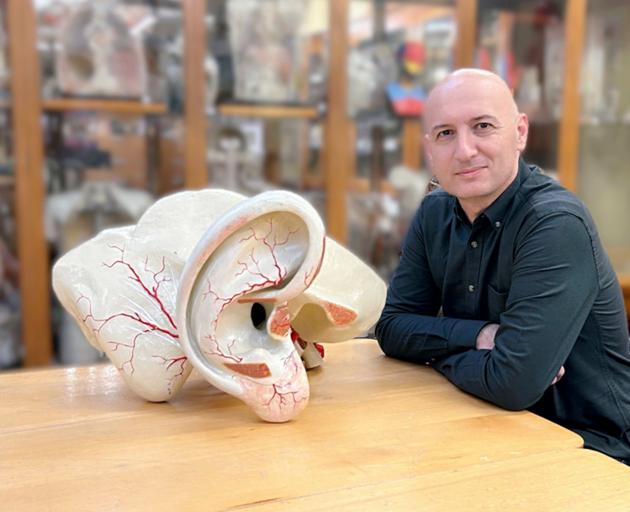
Applied anatomy researcher Associate Prof Yusuf Cakmak was awarded this year’s Royal Society Te Apārangi Charles Fleming Senior Scientist Award.
His research aims to unravel innervation pathways of the human auricula (stimulate the nerves of the ear), which may have implications for wearable neuroprosthetics and therapeutic interventions.
He said the project hoped to uncover the intricate nerve connections in the muscles of the human ear and the auricular vagus nerve.
"By addressing a critical gap in our understanding of these neural pathways, the study has the potential to revolutionise wearable therapeutic devices for the human ear."
Using cutting-edge imaging techniques, Prof Cakmak collaborated with experts from Europe, to meticulously analyse human imaging data, pinpointing key areas for detailed examination.
The research was particularly significant because it built on his previous findings, which demonstrated the therapeutic benefits of auricular stimulation for neurological conditions and could lead to new interventions for a variety of medical issues.
His research focuses on developing devices that work with the nervous system, to restore lost functions or enhance existing ones.
Such devices range from cochlear implants that restore hearing, to brain-machine interfaces that enable movement in paralysed people.
His pioneering research, supported by MedTech Core and the Health Research Council of New Zealand, investigates non-invasive wearable devices for the ear.
To date, his research targeting electrical stimulation on auricular muscles in the ear has already significantly improved patients with Parkinson’s, and also on odour perception and stomach activity.
He believed numerous conditions could benefit from these devices, including inflammatory diseases, autonomic disorders and related dysfunctions within organs, as well as neurological disorders, Prof Cakmak said.
"Linking this information on anatomy with cutting-edge technology is developing brand-new surgery-free methods to manage dysfunctional neural networks."
The $10,000 Royal Society prize would provide additional support for his team to investigate detailed neural networks within the human ear, and it was hoped the information would eventually lead to further non-invasive devices to improve quality of life, he said.
"It has the potential to revolutionise patient care.
"I predict these technologies will increasingly influence how diseases are managed into the future."












